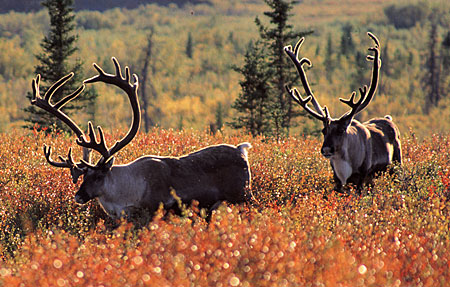
Wildlife biologists say the Western Arctic caribou herd numbers have stabilized in the Selawik National Wildlife Refuge near Kotzebue.
The most recent count of caribou showed a slight dip from 2017 — from 259,000 to 244,000 — but it’s more than there were in 2016. Caribou biologist Alex Hanson says this winter’s conditions look promising for the herd.
“Looking at the survival-to-date this winter, things are looking pretty good,” Hanson said. “Very few mortalities out there. So hopefully this winter will be good to the caribou and they’ll continue to grow.”
Hanson says that the adult cow survival rate remains low, around 78%. However, there’s a high birth rate among calves, and calf survival rates are stable.
The herd had a peak of around 500,000 caribou in 2002, before a sharp decline occurred, ending in 2016 with about 201,000 caribou remaining. Hanson says they don’t have a direct cause for the decline, but there were a series of die-offs in that time period, and ice conditions prevented some caribou from being able to access their food.
“Certainly weather, predation, disease could come into play as well,” Hanson said. “But the reality of it is the caribou populations are cyclic — they come up and they go down.”
Hanson says the harvest rate for local hunters is about 12,000 caribou, accounting for about half of total caribou harvest in the state. Non-local hunters get about 250 to 300 caribou annually, depending on the year.
Refuge manager Susan Georgette says one of the things that U.S. Fish and Wildlife Service officials are keeping tabs on is the warmer climate in the area, which Georgette says is having an effect on permafrost and vegetation that caribou eat.
“A lot of shrubs are moving into tundra areas, as I’m sure a lot of you have noticed,” Georgette said. “Winter rains have become more common, not this year but the last few years, and that can have a bad effect on caribou. And wildfires are expected to increase.”
Georgette says that at the December 2019 meeting of the Western Arctic Caribou Herd Working Group, a University of Alaska Fairbanks climatologist said that if weather conditions continue on the current trajectory in the region, the village of Ambler could have weather closer to Homer in about 50 years. This could mean changes to eating and migratory habits of the herd.
